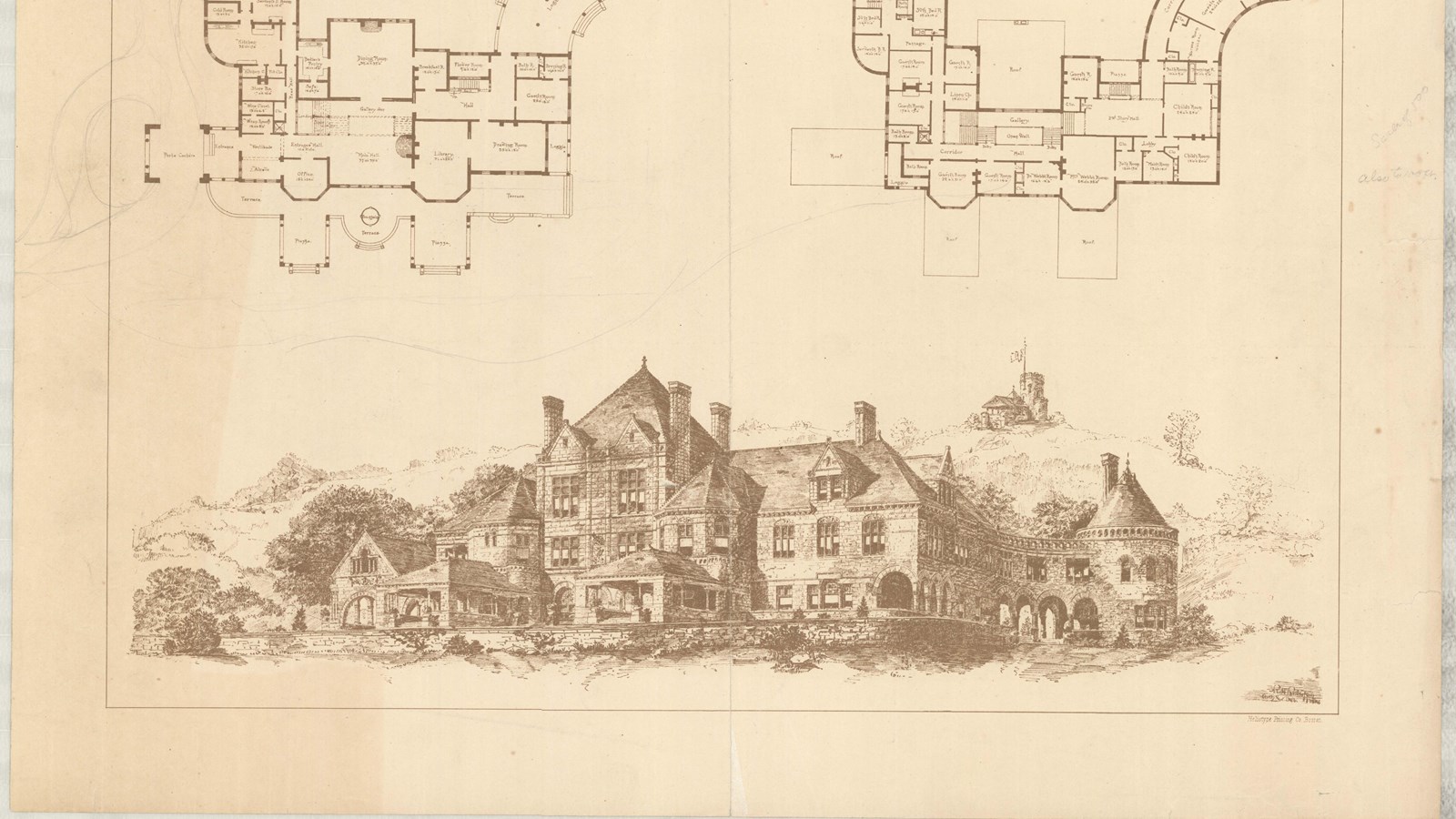Last updated: June 11, 2024
Place
Shelburne Farms

Olmsted Archives
Quick Facts
During his three years at Shelburne Farms, Frederick Law Olmsted organized the property into three distinct areas: farm, forest, and park. Olmsted additionally developed a winding road system to highlight the rolling lakeside topography and views.
Within a month of his first visit in 1886, Olmsted had formulated a basis for his proposal, which he described to Charles Eliot as “a perfectly simple park, or pasture-field, a mile long on the lake, half a mile deep, the house looking down over it”.
Olmsted was convinced that once Shelburne Farms was completed, it “would be the most interesting and publicly valuable private work of the time on the American continent”. One proposal that Olmsted ardently promoted was that the estate include an arboretum of all the trees and shrubs native to Vermont.
A great deal of planting was done according to Olmsted’s recommendation, but the arboretum was never completed. This was a huge frustration for Olmsted, because while Shelburne Farm was privately owned, he believed it should have a public purpose.
With no arboretum in sight, Olmsted began losing enthusiasm for Shelburne Farm. At the end of the summer of 1888, Olmsted handed over work at Shelburne to his sons and associates. Despite leaving, Olmsted helped create an estate which offers some of the most pleasant views of Vermont’s pastoral landscape and dramatic views of the Adirondack Mountains.
Source: "Shelburne Farms," The Cultural Landscape Foundation
For more information and primary resources, please visit:
Olmsted Research Guide Online
Olmsted Archives on Flickr
Olmsted Online
Within a month of his first visit in 1886, Olmsted had formulated a basis for his proposal, which he described to Charles Eliot as “a perfectly simple park, or pasture-field, a mile long on the lake, half a mile deep, the house looking down over it”.
Olmsted was convinced that once Shelburne Farms was completed, it “would be the most interesting and publicly valuable private work of the time on the American continent”. One proposal that Olmsted ardently promoted was that the estate include an arboretum of all the trees and shrubs native to Vermont.
A great deal of planting was done according to Olmsted’s recommendation, but the arboretum was never completed. This was a huge frustration for Olmsted, because while Shelburne Farm was privately owned, he believed it should have a public purpose.
With no arboretum in sight, Olmsted began losing enthusiasm for Shelburne Farm. At the end of the summer of 1888, Olmsted handed over work at Shelburne to his sons and associates. Despite leaving, Olmsted helped create an estate which offers some of the most pleasant views of Vermont’s pastoral landscape and dramatic views of the Adirondack Mountains.
Source: "Shelburne Farms," The Cultural Landscape Foundation
For more information and primary resources, please visit:
Olmsted Research Guide Online
Olmsted Archives on Flickr
Olmsted Online
